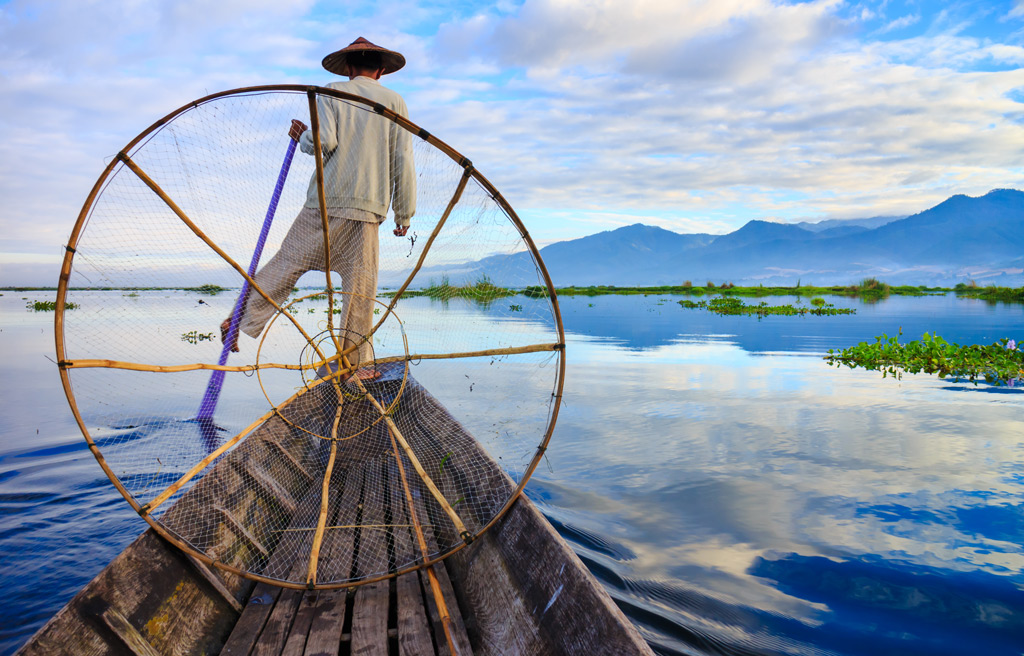Myanmar (previously known as Burma) is one of the most mysterious and poorly studied countries of Southeast Asia. Due to the features of the political system (since 1962, the Rules of the junta here and only in 2012 began to soften) for a long time Myanmar was partially, then completely closed to foreign tourists. As a result, Western culture almost had no influence on the life of the Burmans, and in many corners of the country, people continue to live in the same way as fifty, or even a hundred years ago. On the territory of Shan, where Lake Inle is located, for the most part such an old way has been preserved. Locals still practice traditional classes of their fathers and grandfathers-fishing, weaving and gardening, and life flows so slowly and measuredly that only thanks to satellite plates and motor boats can we understand that in the yard of the 21st century.
I want in Myanmar!
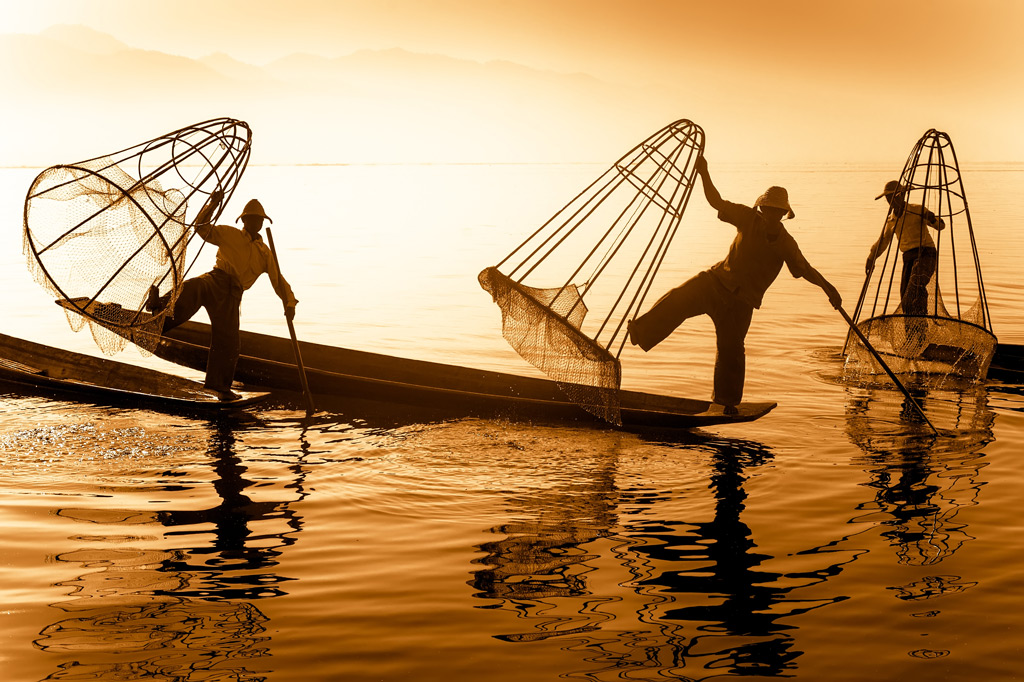
Immediately upon arrival on Inla, it becomes obvious why the lake received the status of the second (after Bagan’s pagodas) by the significance of the sights of Myanmar. Surrounded by mountains, covered with green islands, Inle makes a strong impression. Add fishermen to this in traditional boats (in which it is supposed to row your foot),
Many species of birds and Buddhist monasteries built directly on the water, and you will get a completely unforgettable and exotic picture.
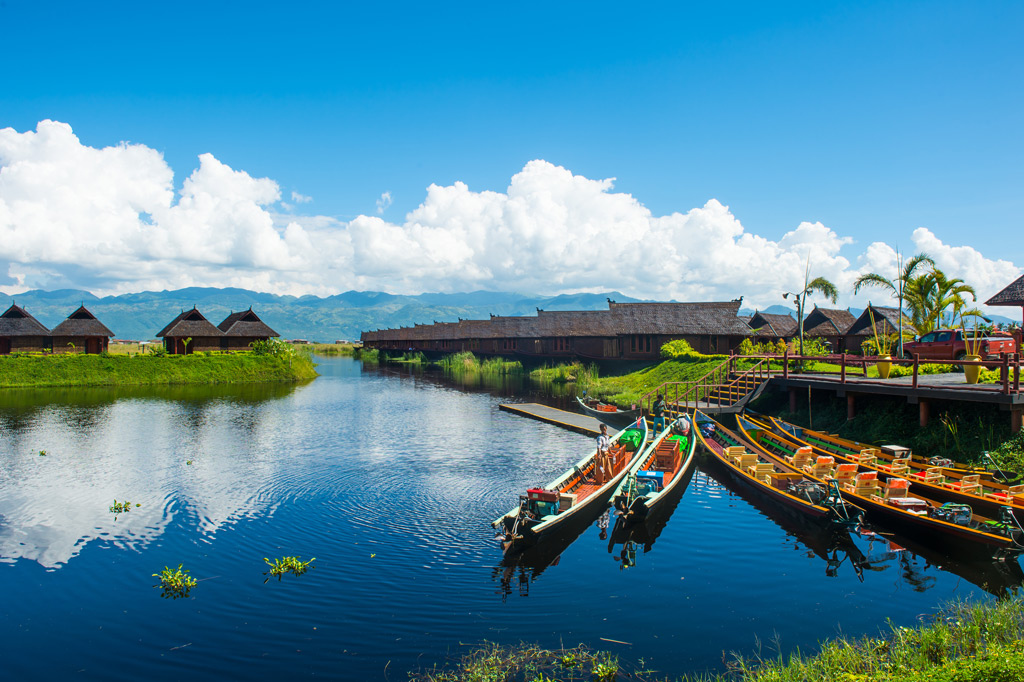
About 100 thousand representatives of the Inter nationality live on the lake in 17 villages, which translates as “children of the lake”. It is believed that this people settled on the lake to escape from the raids of more warlike neighboring tribes.
The houses here are built right on the water, on stilts, and the streets between them are channels through which local and tourists move on boats. Thanks to this system of channels of the surroundings of Lake Inle, the name of Asian Venice.
Intha came up with a very original way to engage in agriculture without going ashore – when pieces of humus from rotten algae and roots of water plants come to the surface, they are simply fixed on the spot with bamboo poles, and they grow vegetables and flowers on these peculiar islands.

Intha has been professing Buddhism for several centuries, so on the lake itself and next to it you will find many temples, monasteries and pagodas. Of greatest interest is the hill of Indin, on which there are several hundred pagodas. The oldest of them were built in the 14th century, the bulk of the structures dated 17-18 centuries. Many pagodas are at different stages of destruction, and some have already reached the hands of Burmese restorers, and now they are concrete turrets covered with gold paint.
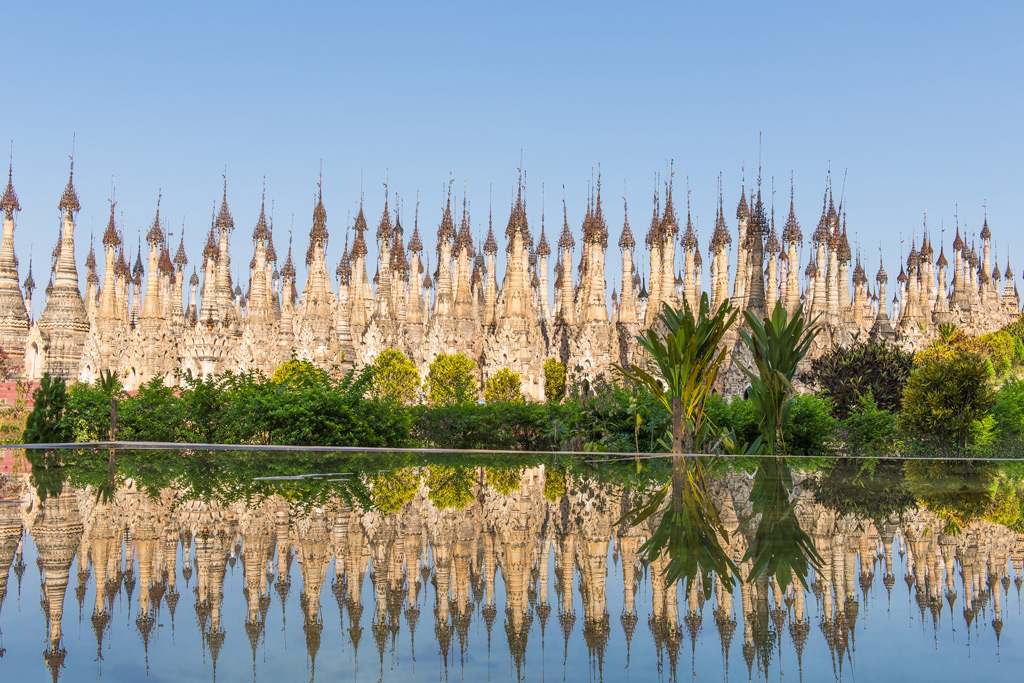
To get into Indian, you need to swim a few kilometers along a long narrow channel. Keep in mind that in the summer, when the lake is smaller, moving along the channel is impossible. And keep in mind that on the way from the pier to the hill you will have to overcome the local souvenir collapse, and this task is not simple-the Burmans are very persistent in their desire to sell something to tourists.
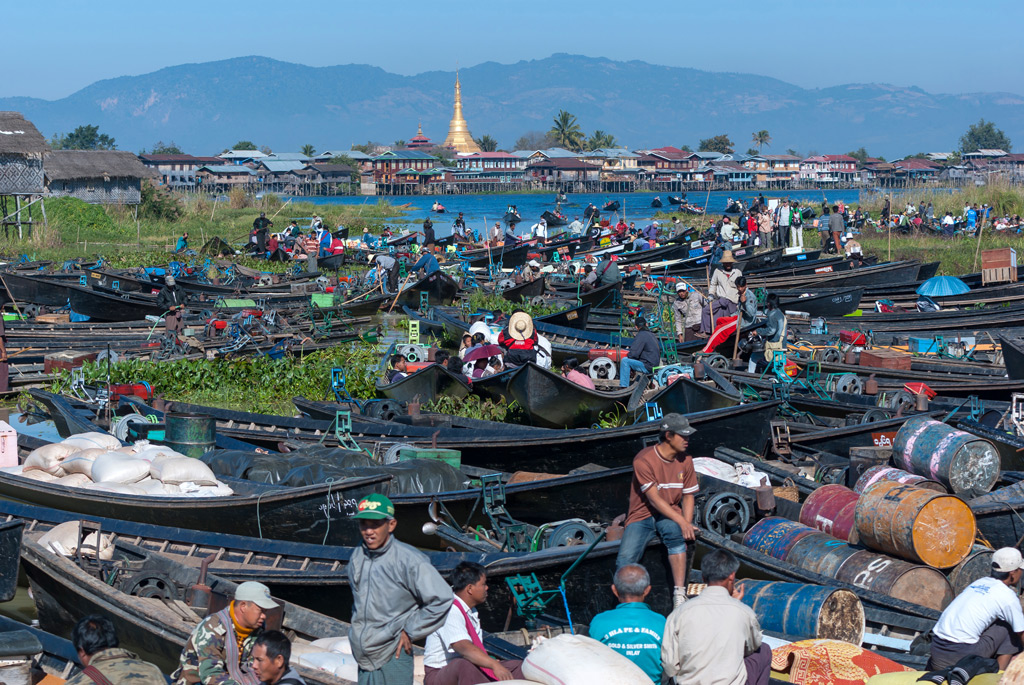
The largest temple on the lake, Phaung Du Kuang, is famous for its Buddha figurines – there are five of them. Locals claim that the figures were brought to a lake from Bagan and they can heal illness and fulfill desires. To express their respects to five Buddhas, believers stick thin leaves of gold gold on them, so the statues have long lost their original shape and look like bizarre gold blocks. They say that the monks periodically roll up pieces of gold coating from statuettes – not in order to cash in, but simply so that they can fit on the altar.
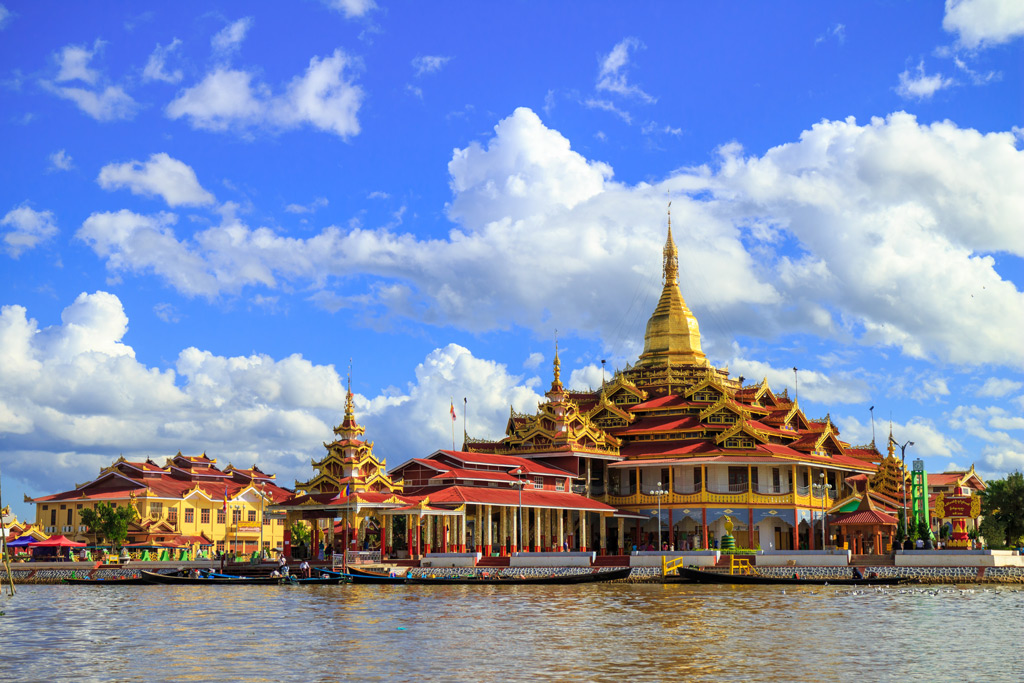
As in many other parts of the world, on Lake Inla there is a popular tourist attraction – visiting factories and workshops. On the lake, there is still a clock for the Sarongs and Palantins, so the factories there are quite workers. But forging swords and daggers and the production of jewelry here has long been oriented exclusively on tourists. Household knives and scissors are made in the depths of Shang, but this production does not represent any interest for foreigners.
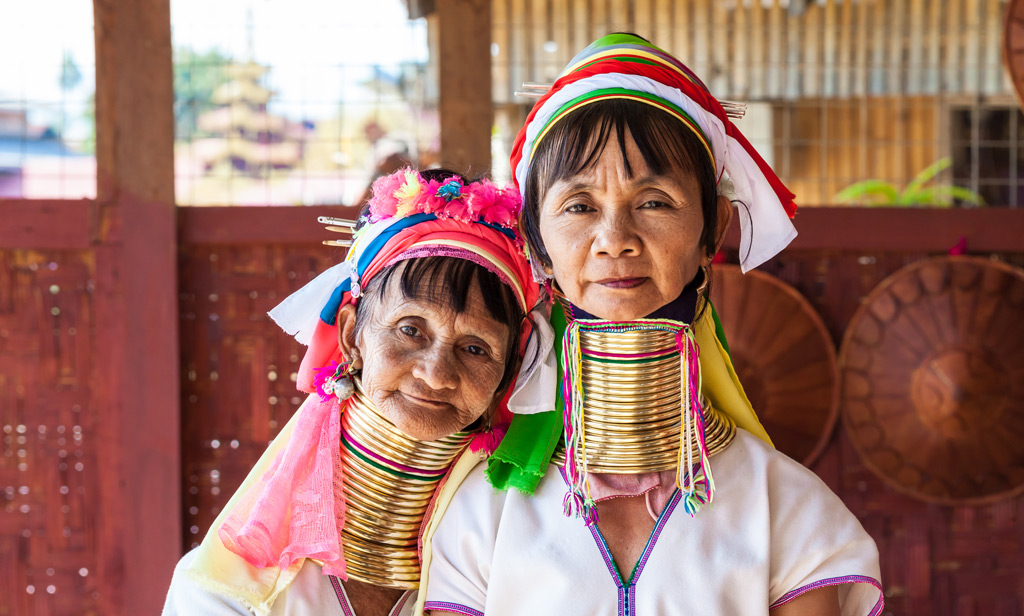
In weaving factories, you can find women of the Padawung nation (and take a picture with them for a small fee). These ladies are famous for carrying many heavy brass rings on the neck. From the age of five, girls begin to wear rings around the neck, increasing their number every year. As a result, their collarbone falls, the chest is squeezed and the neck visually seem unnaturally long. Contrary to prejudice, the rings can be removed, this will not cause any problems with the spine. And today more and more women do so, getting rid of jewelry forever.
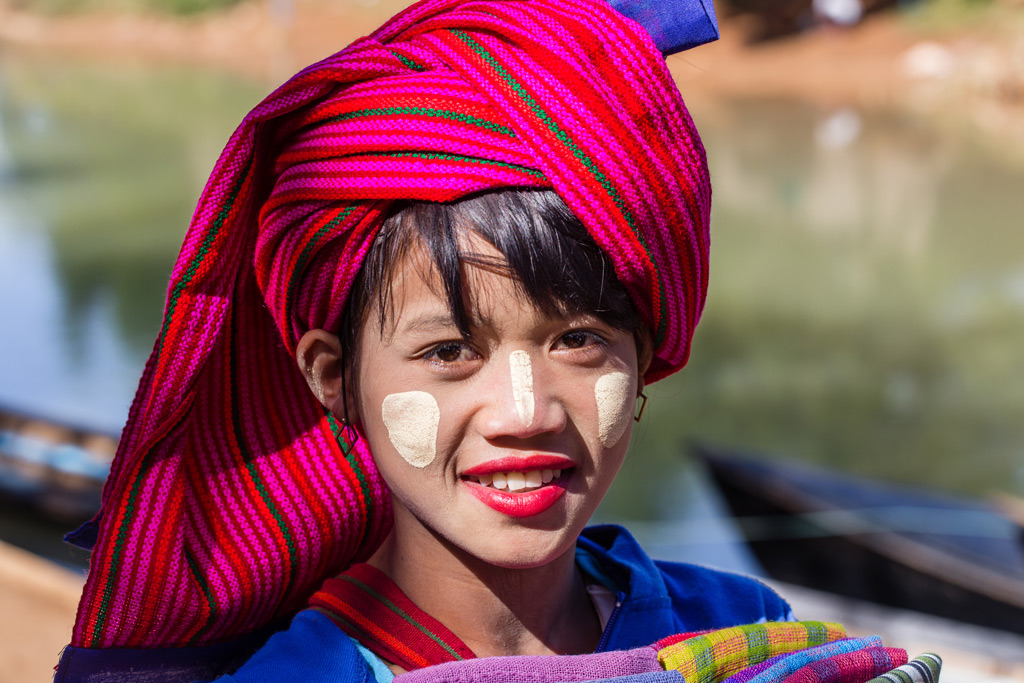
In general, many different tribes and small peoples live on the territory of the state, whose representatives can be seen in traditional floating markets on Lake Inla. They come to the markets not only for the sake of trading a variety of products and souvenirs, but also to take pictures with tourists for a fee. If you suddenly become embarrassed from the fact that you came to the market to stare at representatives of small peoples, we can reassure you-firstly, you yourself are no less interested for them, and secondly, for many of the village residents, photographing with tourists is the only way to make money.
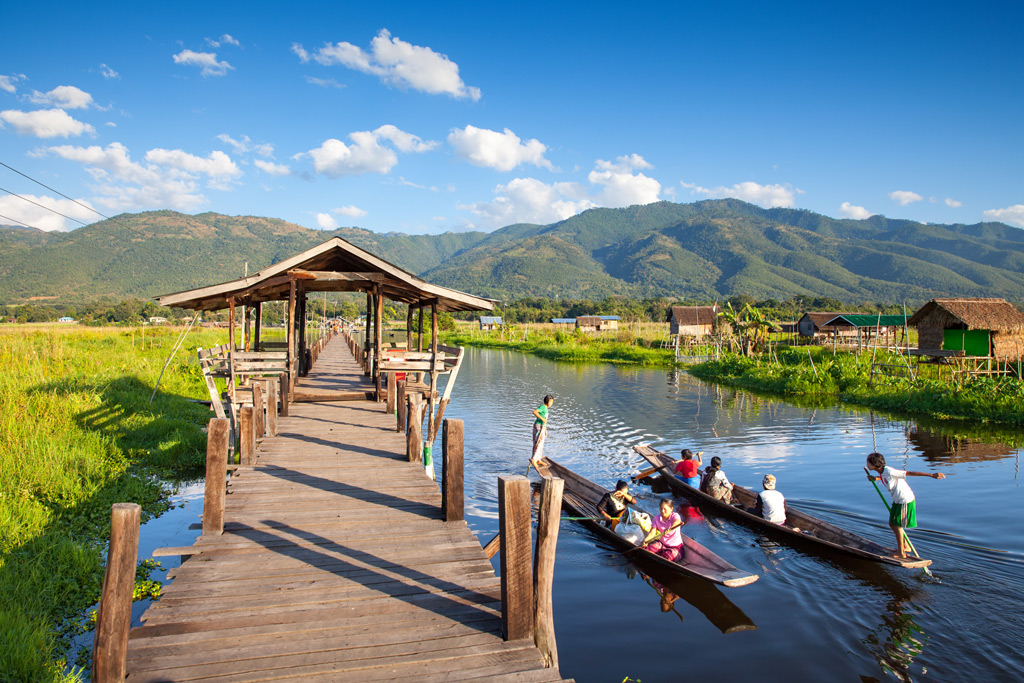
Every year, more and more travelers from Europe and the USA come on Inla. Of course, the conditions for tourists on the lake have improved significantly in recent years, but there are also disadvantages – the movement on the water is becoming more and more lively, the lazy relaxed atmosphere disappears, and prices are constantly rising. So if you are interested in Lake Inle (and Myanmas as a whole),
We advise you not to postpone the trip to the long box.
On the trip, pay for the purchases of the OneTwotrip loyalty card, and up to 10% of the order on OneTwotrip, as well as up to 2% of any purchases paid by the card, will return to your account.
Author: Anastasia Zakharova
You may be interesting:
Burma – 14 things that can only be done here
5 exotic tribes, which can be seen on a visit
9 secret places of Southeast Asia

